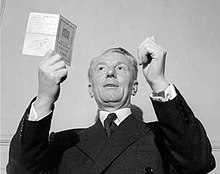Blackpool South
Apr 18, 2020 9:32:54 GMT
Andrew_S, Delighted Of Tunbridge Wells, and 1 more like this
Post by Deleted on Apr 18, 2020 9:32:54 GMT
A constituency of contrasts. The famous Blackpool Tower and Winter Gardens at one side, the down-at-heel 1940s estate Mereside on the other, and inbetween the rough-and-ready realities of faded seaside glamour. Blackpool South is stocked full with the gaudy, glitzy, full-on song-and-dance tourist trap of a typical English coastal resort. The rows and rows of B&B and hotels may look scrappy and in need of a good lick of paint, but every year, tens of thousands of Brits still take the train to the 'pool for the full on tacky-and-tatty experience. Tie-ins with much bigger and far more popular brands keeps Blackpool afloat: the Madame Tussauds' by the Tower needs BBC One's Strictly Come Dancing, and Marvel's mult-millionaires far more than it needs Morecambe and Wise or Sir Bruce Forsyth. The Pleasure Beach has more corporate sponsors than you can shake your stick of rock at. It's the harsh reality of keeping Blackpool going, for the end of the pier crooners aren't packing the halls as they once did.
Away from the Prom-Prom-Prom is the densely packed urban residential areas moving out towards Martin Moss and the flatter plains of Fylde. Labour racks up the holds in a run from Clifton ward in the east through to the Talbot ward of the Tower and Pier, and has done so for years. There are very few Conservative voting wards in South, with Stanley and Squires Gate at the southern border with achingly moneyed Lytham-St Anne's amongst the rare good news stories for them. When neighbouring North and Fleetwood became North and Cleveleys, it took with it the town of Layton, a suburban residential area for Blackpool's workers, although the council ward of Brunswick acts as a stepping stone between the broadly commercial front and largely residential back of Blackpool. This area, traditionally "Queenstown", is largely interwar terraces and semi-detached houses either side of the main Devonshire Road, and signs of run-down neglect and decay are hard to miss. The same is true of the area known as South Shore, where the boarded up windows begin at road junctions and hardly stop. Across Blackpool as a whole, barely 3% of the population is recorded by the 2011 census as other than white: the Asian British population is a sixth of the overall NW total.
Labour gained the seat in 1997, a first-time win for them going back to the seat's creation in 1945. The 11,000+ majority slipped ever smaller in almost every subsequent election. falling to shy of 3,000 in 2017 before being lost to a significant swing in 2019 to the Conservatives. In the 2015 council elections, Labour won across eight of the wards in South, and handsomely in many cases. Social renting of properties in South is moderate to low: about a quarter of all properties in Brunswick ward, roughly a fifth in Clifton, ten percent in traditionally Tory Highfield. What is very clear is the economic trouble in which South finds itself: the 2019 Index of Deprivation shows 41% of the entire town is within the most deprived decile, with a concentrated area running through Layton into the town centre's golden mile and down towards the Fylde border. The illuminations may shine every year, but the post-corona financial reality of Blackpool South looks bleak.
Away from the Prom-Prom-Prom is the densely packed urban residential areas moving out towards Martin Moss and the flatter plains of Fylde. Labour racks up the holds in a run from Clifton ward in the east through to the Talbot ward of the Tower and Pier, and has done so for years. There are very few Conservative voting wards in South, with Stanley and Squires Gate at the southern border with achingly moneyed Lytham-St Anne's amongst the rare good news stories for them. When neighbouring North and Fleetwood became North and Cleveleys, it took with it the town of Layton, a suburban residential area for Blackpool's workers, although the council ward of Brunswick acts as a stepping stone between the broadly commercial front and largely residential back of Blackpool. This area, traditionally "Queenstown", is largely interwar terraces and semi-detached houses either side of the main Devonshire Road, and signs of run-down neglect and decay are hard to miss. The same is true of the area known as South Shore, where the boarded up windows begin at road junctions and hardly stop. Across Blackpool as a whole, barely 3% of the population is recorded by the 2011 census as other than white: the Asian British population is a sixth of the overall NW total.
Labour gained the seat in 1997, a first-time win for them going back to the seat's creation in 1945. The 11,000+ majority slipped ever smaller in almost every subsequent election. falling to shy of 3,000 in 2017 before being lost to a significant swing in 2019 to the Conservatives. In the 2015 council elections, Labour won across eight of the wards in South, and handsomely in many cases. Social renting of properties in South is moderate to low: about a quarter of all properties in Brunswick ward, roughly a fifth in Clifton, ten percent in traditionally Tory Highfield. What is very clear is the economic trouble in which South finds itself: the 2019 Index of Deprivation shows 41% of the entire town is within the most deprived decile, with a concentrated area running through Layton into the town centre's golden mile and down towards the Fylde border. The illuminations may shine every year, but the post-corona financial reality of Blackpool South looks bleak.



